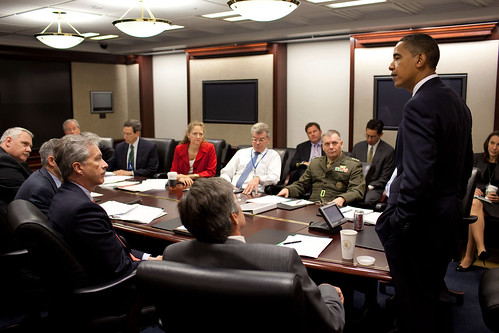This video accompanies Fear, Inc.: The Roots of the Islamophobia Network in America, a new report from The Center for American Progress. I quote from the website:
(The) network of hate is not a new presence in the United States. Indeed, its ability to organize, coordinate, and disseminate its ideology through grassroots organizations increased dramatically over the past 10 years. Furthermore, its ability to influence politicians’ talking points and wedge issues for the upcoming 2012 elections has mainstreamed what was once considered fringe, extremist rhetoric.
And it all starts with the money flowing from a select group of foundations. A small group of foundations and wealthy donors are the lifeblood of the Islamophobia network in America, providing critical funding to a clutch of right-wing think tanks that peddle hate and fear of Muslims and Islam—in the form of books, reports, websites, blogs, and carefully crafted talking points that anti-Islam grassroots organizations and some right-wing religious groups use as propaganda for their constituency.
Some of these foundations and wealthy donors also provide direct funding to anti-Islam grassroots groups. According to our extensive analysis, here are the top seven contributors to promoting Islamophobia in our country:
- Donors Capital Fund
- Richard Mellon Scaife foundations
- Lynde and Harry Bradley Foundation
- Newton D. & Rochelle F. Becker foundations and charitable trust
- Russell Berrie Foundation
- Anchorage Charitable Fund and William Rosenwald Family Fund
- Fairbrook Foundation
Altogether, these seven charitable groups provided $42.6 million to Islamophobia think tanks between 2001 and 2009—funding that supports the scholars and experts that are the subject of our next chapter as well as some of the grassroots groups that are the subject of Chapter 3 of our report.This is an important report, drawing attention to the impact of a small group of well financed people in creating a climate of hate and fear in this country which has the potential to pervert national policy. Islamaphobia takes us back to to a worse time characterized by the unreasonable prejudice against Japanese, German and Italian Americans during the World War II. It is a continuation of the heritage in this country of prejudice against Hispanics, Jews, African-Americans, immigrants, and Indians.
























